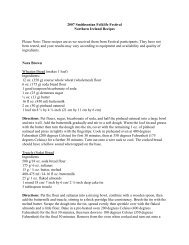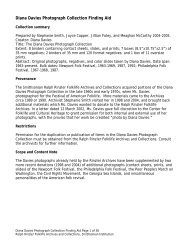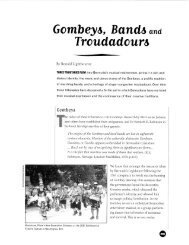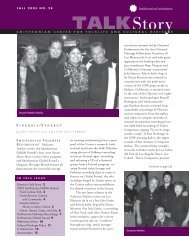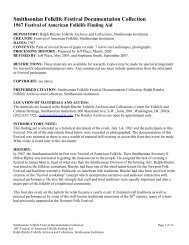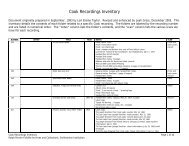Who Owns Traditional Medical Knowledge? - Smithsonian Center ...
Who Owns Traditional Medical Knowledge? - Smithsonian Center ...
Who Owns Traditional Medical Knowledge? - Smithsonian Center ...
Create successful ePaper yourself
Turn your PDF publications into a flip-book with our unique Google optimized e-Paper software.
170 SITA REDDY<br />
FIGURE 1. Frontispiece of Hortus Malabaricus vol. 1 (1678). Anonymous etching of the<br />
Garden of Malabar in which four kneeling indigenous Malayalee children, identified by<br />
their elongated earlobes, offer potted plants to the seated figure of Indian Botany. Courtesy<br />
of Wellcome Library, London.<br />
Until October 2003, when Kerala University unveiled the newly translated Hortus<br />
Malabaricus volumes, presenting the first set to the president of India as a landmark<br />
event. 38 Professor of Botany, K. S. Manilal, who spearheaded the university’s<br />
30-year translation project, argued that the original Hortus Malabaricus represented<br />
the earliest example of printing in the Malayalam language. It was the “native<br />
heritage” of the people of Kerala, their lost knowledge, a hidden history that<br />
the world needed to recognize. In Manilal’s view, the ethnomedical information in<br />
its volumes was Kerala’s cultural heritage but it belonged to all humanity, a for-



